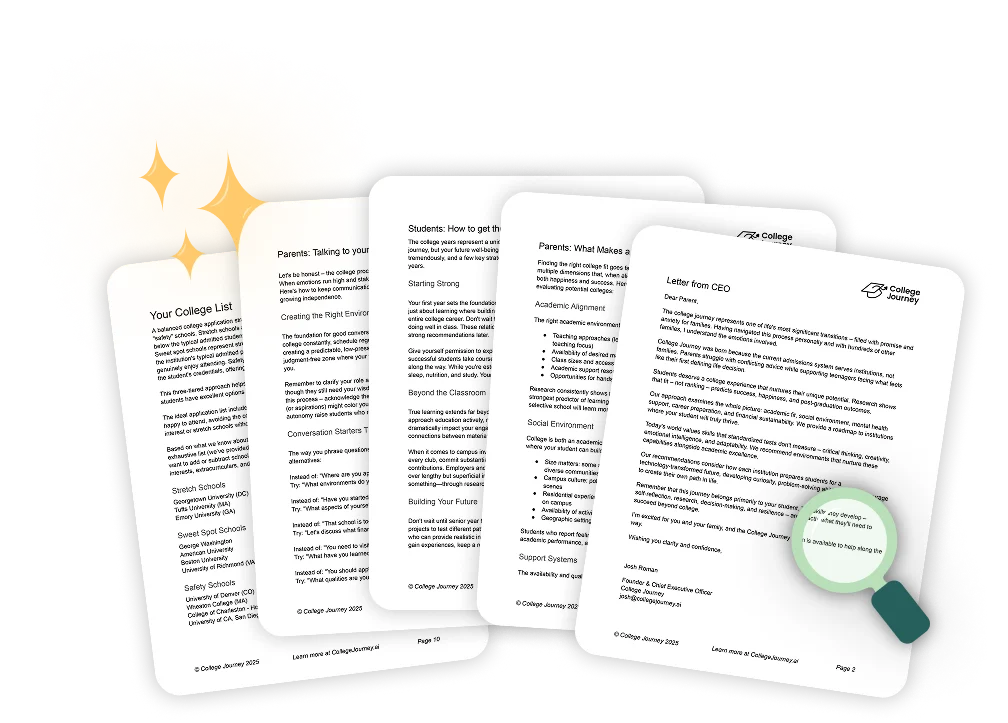Saving for college can feel overwhelming, but a 529 plan offers a powerful way to grow your money tax-free while planning for a child’s education. Whether you’re a parent, or future student, understanding how to use a 529 plan for college savings can help you take control of rising tuition costs and make informed financial decisions.
This guide breaks down everything you need to know—from how 529 plans work and how to open one, to smart strategies for using your funds effectively.
Key Takeaways
- A 529 plan is a tax-advantaged investment account designed to save for qualified education expenses.
- There are two main types: college savings plans and prepaid tuition plans.
- You can open a 529 plan in any state—many offer tax breaks to residents.
- Funds grow tax-free and can be used for tuition, room and board, books, and even student loans.
- Contributions should start early and be made consistently for best results.
- Qualified withdrawals are tax-free, but non-qualified ones may face penalties.
What Is a 529 College Savings Plan?
A 529 plan is a state-sponsored investment account that allows individuals to save for future education expenses with major tax benefits. Named after Section 529 of the Internal Revenue Code, these plans are flexible and accessible to anyone looking to plan ahead for college, vocational training, or even K–12 tuition, and are a foundational part of effective college financial planning.
Key Features and Benefits
- Tax-Free Growth: Earnings grow federally tax-free and aren’t taxed when used for qualified expenses.
- High Contribution Limits: Most plans allow contributions well over $300,000.
- Account Control: The account owner maintains control, even if the beneficiary changes.
- Flexibility: Funds can be used for college, vocational school, apprenticeships, or to pay off student loans.
Types of 529 Plans: Savings vs. Prepaid
When it comes to saving for college, 529 plans offer two primary options: Savings Plans and Prepaid Tuition Plans. Both grow tax-free when used for qualified education expenses, but they work very differently.
1. 529 Savings Plans
This is the most popular type of 529 plan. It works like a retirement investment account, allowing you to contribute funds that are invested in mutual funds, ETFs, or similar options. The account’s value fluctuates based on market performance.
As of mid-2023, there were approximately 16.25 million active 529 savings plan accounts nationwide, with total assets under management reaching $450.5 billion, highlighting their widespread use among families planning for college.
Key Benefits:
- Broad usage: Tuition, housing, books, and more
- Flexibility: Can be used in any state or qualifying institution
- Control: You remain the account owner and can change the beneficiary
2. 529 Prepaid Tuition Plans
Prepaid plans let you lock in current tuition rates for future college attendance at participating public in-state institutions, helping manage tuition expenses. You pay for tuition credits now, and they’re applied later, regardless of how much tuition costs have risen—something especially useful given the rising average cost of college tuition in the U.S. However, these plans typically don’t cover room and board, and may have residency or school participation requirements.
Key Benefits:
- Tuition inflation protection: Lock in today’s rates
- Low investment risk: Less market exposure
- Simpler structure: Ideal for in-state public colleges
Which 529 Plan Should You Choose?
Overwhelmed by college research?
Let us help save time and find the perfect schools for your family.
- Go with a 529 Savings Plan if you want more flexibility and broader coverage of education-related expenses, especially if you’re unsure where the student will attend college.
- Choose a Prepaid Tuition Plan if you’re confident the student will attend an in-state public school and you want to avoid rising tuition costs. As of recent data, there are 17 prepaid 529 plans offered across various states.
How to Open a 529 Plan Account
Opening a 529 account is simpler than many think, making it easier to save for education. Here’s how to get started:
Choosing a Plan Based on Your State
- Check your state’s 529 plan: Many states offer tax deductions or credits for residents who contribute to their home plan.
- Compare fees and performance: Even if your state offers a plan, it might be worth looking at national options with lower fees or stronger returns.
Setting Up an Account for a Beneficiary
- Provide the beneficiary’s Social Security number and date of birth.
- Choose an investment portfolio (age-based options are popular for their hands-off management).
- Set up automatic contributions through your bank account or payroll.
Strategies for Using a 529 Plan Effectively
A 529 plan can be a powerful tool for funding education—but like any financial product, how you use it matters. As of mid-2024, families have collectively invested over $508 billion in 529 plans, highlighting the growing trust in these plans for education savings. Incorporating a 529 into your broader college financial planning strategy can help you make the most of available tax benefits, budget wisely, and stay ahead of rising costs.
Here are key strategies to make the most of your 529 savings:
- Start Early to Maximize Growth
The sooner you begin contributing, the more time your investments have to grow through compound interest. Even small monthly deposits can accumulate significantly over 10–18 years. - Set Up Automatic Contributions
Treat your 529 like a monthly bill. Automating contributions ensures consistency, helps you budget effectively, and removes the temptation to delay. The average account balance is $30,295, showing how regular contributions can add up over time. - Choose Age-Based Investment Portfolios
Many plans offer age-based options that automatically shift from aggressive investments to more conservative ones as the beneficiary nears college age—helping to protect gains as tuition time approaches. - Understand Qualified Expenses
Avoid penalties by using funds only for qualified education expenses—tuition, fees, books, room and board (if enrolled at least half-time), supplies, and some technology. Up to $10,000 can also be used for student loan repayment and K–12 tuition (per year, per student). - Coordinate with Financial Aid
While 529s are considered a parental asset (less impact than student assets), withdrawals do count as untaxed income in the FAFSA formula. Strategically time distributions—ideally in later college years—to reduce the impact on aid eligibility. - Use State Tax Benefits
Many states offer tax deductions or credits for contributions to their own 529 plans. Check your state’s rules to take advantage of additional savings. - Avoid Overfunding
Estimate costs realistically so you don’t contribute more than needed. Unused funds can be reassigned to another beneficiary, saved for grad school, or withdrawn with a penalty if absolutely necessary. - Track and Document Expenses
Keep detailed records of all 529 withdrawals and corresponding qualified expenses in case of IRS scrutiny. Timing and documentation are crucial to avoid taxes and penalties.
How to Withdraw Money from a 529 Plan
Once it’s time to pay for school, withdrawing funds properly is crucial to avoid taxes or penalties.
Qualified vs. Non-Qualified Expenses
Qualified expenses include:
- Tuition and fees
- Room and board (for students enrolled at least half-time)
- Books, supplies, and equipment
- Student loan repayment (up to $10,000 per beneficiary)
Non-qualified expenses include:
- Travel costs
- Health insurance
- Extracurricular activity fees
How to Avoid Penalties and Taxes in 529 Plans
While 529 plans offer significant tax advantages, it’s crucial to adhere to specific rules to maintain these benefits.
1. Spend Only on Qualified Education Expenses
To avoid a 10% penalty and federal income tax on earnings, use funds strictly for qualified education expenses. These include:
- Tuition and mandatory fees
- Books and supplies
- Computers, software, and internet (if required)
- Room and board (if the student is enrolled at least half-time)
- Up to $10,000 in K–12 tuition per year
- Up to $10,000 in student loan repayment (lifetime limit)
2. Time Withdrawals to Match Expenses
Ensure that withdrawals are made in the same tax year the education expense occurs. Withdrawing funds in December for tuition paid in January may trigger taxes and penalties.
3. Keep Detailed Records
Maintain receipts, tuition statements, and enrollment documents. If audited, you’ll need to demonstrate that withdrawals matched eligible expenses.
4. Avoid Nonqualified Withdrawals
Using funds for nonqualified expenses subjects the earnings portion to income tax and a 10% penalty. Exceptions may apply in cases of death, disability, or receiving a scholarship (the penalty is waived, though income tax still applies).
5. Be Cautious with Refunds
If your student receives a refund from their college (e.g., due to dropped classes), the refunded amount must be redeposited into the 529 plan within 60 days to avoid taxes and penalties.
6. Monitor Lifetime Limits
Each 529 plan has a maximum contribution limit (often $235,000–$550,000 depending on the state). Overfunding isn’t taxed, but future contributions may be rejected, and excess withdrawals could face penalties if not used properly.
Using a 529 Plan for More Than Just Tuition
A 529 plan can cover much more than just tuition fees.
Room and Board, Books, Supplies, and More
As long as your student is enrolled at least half-time, 529 funds can be used for:
- On-campus or off-campus housing (within cost-of-attendance limits)
- Required textbooks and laptops
- Special equipment or internet access needed for school
Using 529 Funds for Apprenticeships or Student Loans
- Registered apprenticeships (with the U.S. Department of Labor) are eligible.
- Up to $10,000 in qualified education loans can be repaid per beneficiary (and per sibling) using 529 funds.
Tax Advantages of 529 College Savings Plans
Federal Tax Benefits
- Tax-free earnings and withdrawals for qualified expenses.
- Contributions are not federally tax-deductible, but the investment grows tax-free.
State Tax Deductions and Credits
- Over 30 states offer full or partial tax deductions or credits for contributions.
- Check your state’s benefits—you might save both now and later.
Final Thoughts: Maximize Your 529 College Savings Strategy
A 529 plan is one of the most powerful tools for education planning, offering tax-free growth and flexible use across a range of qualified expenses. Start early, contribute consistently, and stay informed about eligible uses and tax rules to make the most of your investment.
Ready to take the stress out of college planning? Join College Journey today for expert guidance tailored to your goals, all without the high costs of traditional consulting. Start your journey toward the perfect college fit – sign up now!
About College Journey
College Journey is your personal college counseling assistant, designed to make the complex college application process simple and stress-free. Powered by Alice, your dedicated AI college counselor, College Journey provides step-by-step guidance, so you never miss a deadline or detail. Whether you’re searching for the perfect school, navigating financial aid, or exploring career paths, Alice has the answers.
With personalized recommendations, school comparisons, and tools to track your progress, College Journey ensures you’re supported at every stage of your college journey. Best of all, it’s free to sign up!
FAQs
What is a 529 College Savings Plan?
A 529 College Savings Plan is a tax-advantaged savings plan designed to encourage saving for future education expenses. Named after Section 529 of the Internal Revenue Code, these plans allow individuals to invest money for a beneficiary’s qualified education, which can include tuition, fees, and other related costs at eligible colleges and universities. There are two types of 529 plans: prepaid tuition plans and education savings plans.
How does a 529 account work?
A 529 account works by allowing you to contribute after-tax dollars, which can then be invested in various options including stocks, bonds, or mutual funds. Over time, your investments can grow, and you can withdraw the funds tax-free when used for qualified education expenses. The account owner (typically a parent or grandparent) controls the account and can change the beneficiary if needed.
Can I use a 529 plan out of state?
Yes. You can use your 529 plan to pay for any eligible school in the U.S. and some abroad—even if the plan is from a different state.
What happens if my child doesn’t go to college?
You have options to consider various 529 plans effectively save for education.
- Change the beneficiary to another family member.
- Use the funds for apprenticeships or student loan repayment.
- Leave the account open for future education.
- Withdraw the money (subject to taxes and penalties on earnings).
Can I change the beneficiary of the plan?
Yes. You can change the beneficiary to a sibling, cousin, parent, or even yourself—any family member as defined by the IRS.
What can I use 529 funds for?
You can use 529 funds for a variety of qualified education expenses, which include tuition, mandatory fees, room and board, books, and supplies. Additionally, 529 plans 529 funds can also cover costs for certain apprenticeship programs and up to $10,000 per year for K-12 tuition expenses. It’s important to note that any funds not used for qualified education will incur taxes and a penalty, so it’s crucial to understand what expenses are considered qualified.
What are the tax benefits of a 529 plan?
The primary tax benefits of a 529 plan include tax-free growth and tax-free withdrawals when the funds are used for qualified education expenses. Additionally, many states offer tax deductions or credits for contributions made to a state’s 529 plan. However, the specifics can vary by state, so it’s advisable to check your local regulations to maximize your savings.




